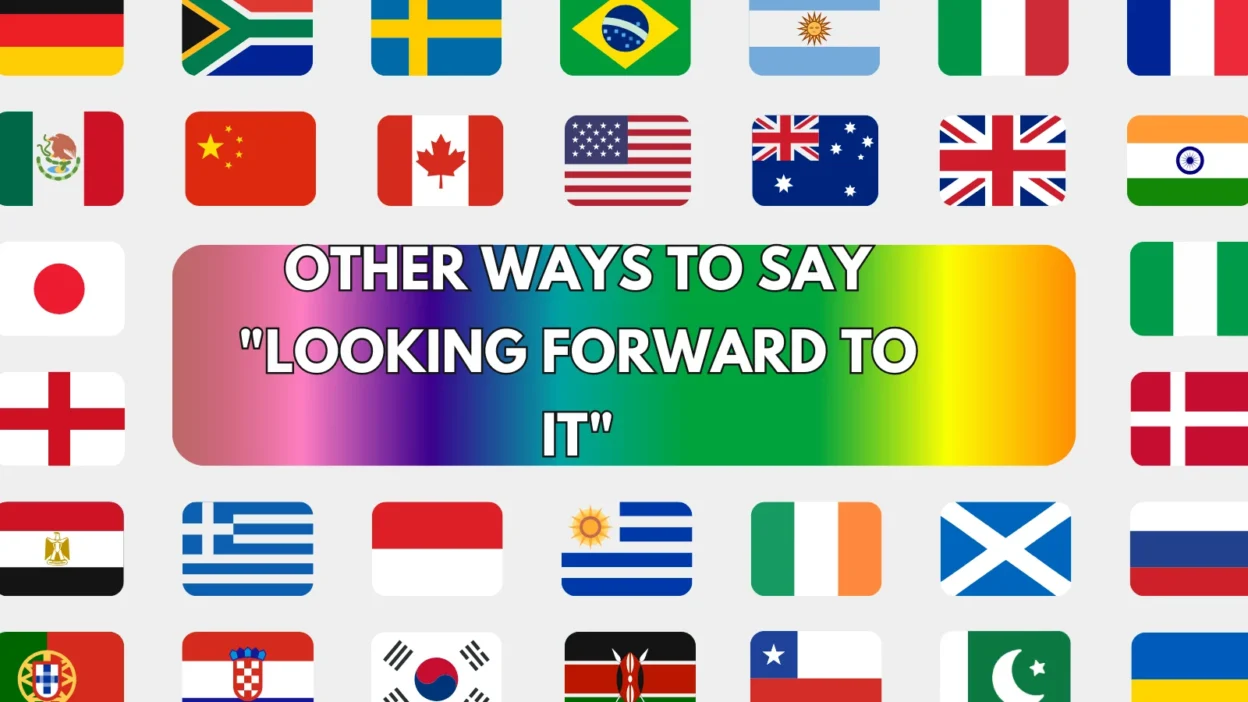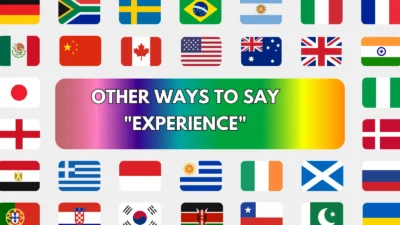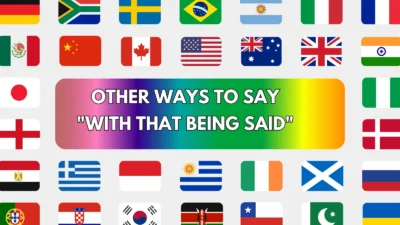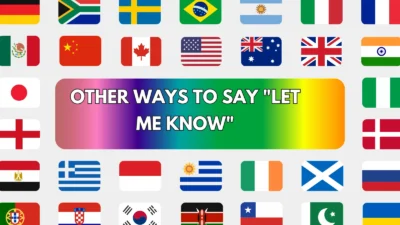The phrase “looking forward to it” is a warm, enthusiastic way to express anticipation or excitement about something in the future—be it a meeting, event, opportunity, or outcome. It’s friendly and commonly used, especially in emails and conversations.
But if you use it too often, especially in professional settings, it can feel repetitive or informal. Whether you’re writing to a boss, a client, or a friend, having alternative ways to express anticipation can make your communication more engaging and effective.
Here are 25 professional, friendly, and varied ways to say “looking forward to it,” each explained with its meaning, usage example, best context, and tone.
1. I’m Excited About It
Meaning:
Expresses enthusiastic anticipation about something upcoming.
Detailed Explanation:
More expressive than “looking forward,” this version adds emotion and personal engagement.
Scenario Example:
I’m excited about the workshop next week — the agenda looks fantastic.
Best Use:
Friendly emails, team chats, event planning.
Tone:
Upbeat, informal, warm.
2. I’m Anticipating It
Meaning:
Indicates thoughtful or eager expectation.
Detailed Explanation:
This is slightly more formal and intellectual, ideal when you’re discussing plans or results.
Scenario Example:
I’m anticipating the project results and hoping for positive feedback.
Best Use:
Professional updates, reports, planning discussions.
Tone:
Professional, composed, thoughtful.
3. I Can’t Wait
Meaning:
Shows high excitement and impatience for something enjoyable.
Detailed Explanation:
Very enthusiastic and informal, it adds personal excitement to casual messages.
Scenario Example:
I can’t wait for our weekend getaway!
Best Use:
Informal chats, personal texts, social media.
Tone:
Excited, casual, expressive.
4. I’m Eager for It
Meaning:
Shows you are keen and ready for what’s coming.
Detailed Explanation:
Less emotional than “can’t wait,” this is great for a balance of professionalism and excitement.
Scenario Example:
I’m eager for the upcoming collaboration — it’s a great opportunity.
Best Use:
Professional emails, networking, client communication.
Tone:
Polite, optimistic, engaged.
5. I Look Forward to That
Meaning:
A more specific variation of the original phrase.
Detailed Explanation:
Can be used to refer directly to a previously mentioned event or discussion.
Scenario Example:
Thanks for confirming the meeting. I look forward to that.
Best Use:
Formal and informal exchanges, meetings, polite conversation.
Tone:
Courteous, flexible, professional.
6. It’ll Be Great
Meaning:
Positive expression about an upcoming event or activity.
Detailed Explanation:
Instead of saying you’re waiting, you’re acknowledging its value in advance.
Scenario Example:
Lunch with the team? It’ll be great!
Best Use:
Group chats, friendly workplace interactions.
Tone:
Casual, upbeat, friendly.
7. I’m Counting Down the Days
Meaning:
Shows eager and emotional anticipation.
Detailed Explanation:
A more vivid and playful way to express excitement, often for vacations or major events.
Scenario Example:
I’m counting down the days until our trip to Bali!
Best Use:
Personal messages, informal emails, social media.
Tone:
Playful, excited, informal.
8. I’m Keen on It
Meaning:
British-influenced phrase that shows interest and eagerness.
Detailed Explanation:
More popular in UK English, this is both professional and personal.
Scenario Example:
I’m keen on the proposal and would love to explore it further.
Best Use:
Business emails, discussions, professional feedback.
Tone:
Respectful, modest, British-influenced.
9. I’m Awaiting It
Meaning:
A neutral and polite way to show you’re expecting something.
Detailed Explanation:
Useful for formal writing or correspondence where professionalism matters.
Scenario Example:
I’m awaiting your response to finalize our next steps.
Best Use:
Formal letters, client communication.
Tone:
Professional, patient, neutral.
10. Can’t Wait to See It Happen
Meaning:
Shows excitement about a future outcome or event.
Detailed Explanation:
Adds energy and optimism while keeping things personal.
Scenario Example:
This project is shaping up nicely. Can’t wait to see it happen!
Best Use:
Team updates, motivational conversations.
Tone:
Energetic, positive, encouraging.
11. Eagerly Awaiting
Meaning:
Shows high enthusiasm with a formal touch.
Detailed Explanation:
Ideal when you want to sound respectful and positive at the same time.
Scenario Example:
We’re eagerly awaiting your feedback on the proposal.
Best Use:
Business emails, client communication, cover letters.
Tone:
Polite, optimistic, professional.
12. I’m Ready for It
Meaning:
Shows preparedness and excitement for what’s ahead.
Detailed Explanation:
Great for projects, events, or roles you feel confident about.
Scenario Example:
I’ve reviewed everything — I’m ready for it.
Best Use:
Team meetings, preparation updates.
Tone:
Confident, practical, motivated.
13. It’s Going to Be Fantastic
Meaning:
Confident prediction about a future event.
Detailed Explanation:
Adds enthusiasm and positivity, often used in social or informal settings.
Scenario Example:
Your presentation? It’s going to be fantastic.
Best Use:
Encouragement, team building, peer-to-peer support.
Tone:
Supportive, warm, enthusiastic.
14. I’m Looking Forward to Working Together
Meaning:
Expresses excitement about collaboration or partnership.
Detailed Explanation:
A common and respectful way to end professional introductions or proposals.
Scenario Example:
Thank you for your time. I’m looking forward to working together.
Best Use:
Client emails, business intros, proposals.
Tone:
Polite, professional, friendly.
15. I’m Anxious (In a Good Way)
Meaning:
Shows nervous but excited anticipation.
Detailed Explanation:
Adds a human, vulnerable side to your communication.
Scenario Example:
I’m a little anxious (in a good way) about my first big presentation!
Best Use:
Personal conversations, honest messages.
Tone:
Personal, relatable, expressive.
16. Excited to Get Started
Meaning:
Shows readiness and enthusiasm at the beginning of something.
Detailed Explanation:
Great for onboarding, project launches, or kickoffs.
Scenario Example:
Thanks for the onboarding session. Excited to get started!
Best Use:
New jobs, projects, training.
Tone:
Energetic, positive, confident.
17. Looking Forward to Connecting
Meaning:
Anticipates a future conversation or meeting.
Detailed Explanation:
A professional way to signal that you’re open to further dialogue.
Scenario Example:
Thanks for reaching out. Looking forward to connecting next week.
Best Use:
Networking, professional emails, business follow-ups.
Tone:
Polished, warm, respectful.
18. Hoping for a Great Outcome
Meaning:
Optimistic anticipation of a result or decision.
Detailed Explanation:
Works well when waiting for feedback, results, or approvals.
Scenario Example:
Thanks for considering my application. Hoping for a great outcome.
Best Use:
Job applications, client responses.
Tone:
Respectful, hopeful, sincere.
19. Awaiting with Interest
Meaning:
A formal and intellectual expression of anticipation.
Detailed Explanation:
Best for academic, legal, or professional contexts.
Scenario Example:
We are awaiting with interest the results of your study.
Best Use:
Reports, academic correspondence.
Tone:
Formal, analytical, respectful.
20. Can’t Wait to Get Started
Meaning:
Enthusiastic and action-oriented anticipation.
Detailed Explanation:
Adds drive and passion to your message, ideal for new roles or ideas.
Scenario Example:
Thanks for onboarding me — can’t wait to get started!
Best Use:
New hires, personal projects.
Tone:
Energetic, passionate, motivated.
21. Looking Ahead to It
Meaning:
Subtle variation of “looking forward,” with a polished tone.
Detailed Explanation:
Sounds slightly more refined while keeping the message the same.
Scenario Example:
I’m looking ahead to the team retreat next month.
Best Use:
Internal memos, emails, general conversation.
Tone:
Professional, clear, mildly formal.
22. I’m Thrilled About It
Meaning:
Expresses strong excitement and joy.
Detailed Explanation:
Good for positive personal or professional moments.
Scenario Example:
I’m thrilled about joining your amazing team.
Best Use:
New roles, social media, announcements.
Tone:
Happy, energetic, genuine.
23. It’ll Be a Pleasure
Meaning:
Polite and respectful expression of anticipated enjoyment.
Detailed Explanation:
Common in business communication and introductions.
Scenario Example:
It’ll be a pleasure working with your organization.
Best Use:
Client emails, partnerships, formal welcomes.
Tone:
Polite, professional, gracious.
24. Looking Forward to Learning More
Meaning:
Shows eagerness for deeper engagement or discovery.
Detailed Explanation:
Ideal in early conversations, interviews, or onboarding.
Scenario Example:
Thank you for the overview. Looking forward to learning more.
Best Use:
Interviews, training, workshops.
Tone:
Curious, engaged, professional.
25. I’m Excited to See What’s Next
Meaning:
Expresses forward-thinking enthusiasm.
Detailed Explanation:
Great for endings of meetings, updates, or milestones.
Scenario Example:
This quarter was incredible — I’m excited to see what’s next!
Best Use:
Team updates, product launches, motivational speeches.
Tone:
Positive, forward-looking, team-friendly.
Conclusion
“Looking forward to it” is a wonderful phrase, but using the same wording repeatedly can make your communication feel stale or impersonal. By using these 25 creative and professional alternatives, you can tailor your tone, enhance your message, and connect more genuinely—whether you’re networking, writing emails, or simply chatting.




